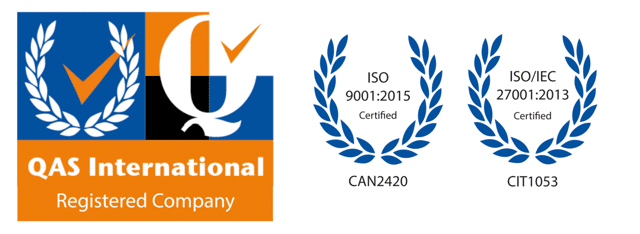The Role of Strategy
 In 1996, Michael Porter’s HBR article titled “What is strategy?” proposes that operational efficiency is insufficient if a firm wants to become – or remain – competitive. Porter argues that tools used to increase productivity, speed and quality can be replicated by any firm. A focus on tools and cost-control cannot create sustainable, long-term profitability. But, he insists, strategy can.
In 1996, Michael Porter’s HBR article titled “What is strategy?” proposes that operational efficiency is insufficient if a firm wants to become – or remain – competitive. Porter argues that tools used to increase productivity, speed and quality can be replicated by any firm. A focus on tools and cost-control cannot create sustainable, long-term profitability. But, he insists, strategy can.
“Strategy” is one of those ephemeral business terms. And the truth is, not everyone knows what it is. Not everyone gets the concept that a business – like a novel or a movie – has an arc. A beginning that is building toward a big moment, a revelation, a future vision: one that is not rooted in the day-to-day management of tools or the bottom line. (And one whose path may move depending on market conditions or opportunities.)
A great, sustainable strategy guides the organization at the macro level. It is built on activities that are hard to measure and resistant to micromanagement. Things like:
- employee efficiency & retention
- reputation & brand
- responsiveness & customer satisfaction
- borrowing power
- partnerships
- diversification & expansion
These kinds of “measures” frustrate managers because they are inherently hard to quantify and control. But entrepreneurial executives instinctively understand that these are necessary. They’re part of that “arc” that helps an organization achieve a profitable, successful future state.
So what does this have to do with technology? (You knew we were going here.)
It is a truth universally acknowledged* that business must use technology (hardware, software, networks, etc.) in order to operate. That’s just the reality of the global economy. Period. So, is “technology” an operational tool? Or is it integral to achieving that future vision? The answer is: both.
How technology is perceived within the organization – and at different levels of management – is important. A manager who views technology only as tools and/or a cost centre, may be making decisions that negatively affect communications and employee satisfaction. An executive who is willing to invest a novel technology solution (i.e., be an early adopter) may feel that the boost to competitive advantage, reputation or customer satisfaction is worth a little extra cost or time spent “getting the kinks out.” These perspectives are at odds.
In some organizations, the realization that technology enables strategy results from (or leads to) decision-making being taken from managers and put in the hands of entrepreneurs and strategists. In some firms, tech decisions are made at the C-Level and managers simply operationalize them without truly understanding why.
Operationally, firms still have to navigate the cost/benefit/value-add matrix, but managers might make different decisions if they understood – strategically – why investment in technology (and in specific technologies) is important. It is, therefore, critical that organizations and team members understand the role that technology plays in a) supporting some of those “hard-to-measure” activities, and b) achieving a future vision. This top-down/bottom-up understanding of helps managers make good decisions. A technology strategy can be an effective way to codify and share that understanding.
In Praise of Technology Strategy
 A technology strategy is a piece of the overall business strategy (the big vision). It lays the operational groundwork and technological infrastructure that sets up and supports the future state of the organization. It helps firms budget five to ten years in advance. More importantly, it gives physical expression to some of those hard-to-measure activities and helps team members understand what to emphasize, where to economize, when to spend and why.
A technology strategy is a piece of the overall business strategy (the big vision). It lays the operational groundwork and technological infrastructure that sets up and supports the future state of the organization. It helps firms budget five to ten years in advance. More importantly, it gives physical expression to some of those hard-to-measure activities and helps team members understand what to emphasize, where to economize, when to spend and why.
For instance, if employee efficiency, satisfaction and retention are important, how can technology support that aim? What technology software/hardware can a firm implement that will help team members be more productive, more easily? What does it cost? How does cost balance against the value it provides to the organization? How does a firm budget for it going forward?
This kind of “big picture” thinking has ramifications beyond employee satisfaction and increased productivity. Happy team members don’t leave; operational costs go down and knowledge retention goes up. Happy employees talk; reputation and brand get a boost. Happy employees deliver better service; customer satisfaction increases. (Let’s take this scenario all the way! The organization gets a “best employer” award, huge press and suddenly investors, new partners and new opportunities come flying out of the woodwork! How’s that for an arc?)
The purpose of sharing strategy within the organization is clarity – knowing where to go and how to get there. Think of it this way: a technology strategy empowers people. The execs and entrepreneurs know that the technology infrastructure exists to support growth, goals and those hard-to-measure activities. Managers have a clear understanding of what is important to the organization and when to invest time/money. Employees have the right equipment and support.
The Results
But what are the results? Well, Michael Porter says: competitive advantage. That seems simplistic when it comes to technology – it’s so pervasive within organizations and its impact is much broader than the productivity/operational tools Porter referenced in 1996. Twenty years later, technology is the foundation upon which all aspects of business and commerce operate. It stands to reason, then, that having a technology strategy to support overall business goals is more important than ever in helping firms succeed.
About Pund-IT Tech Strategy Consulting
 Pund-IT helps firms create technology strategy. We work with growth-oriented organizations to imagine their future state, the “arc” required to get there, and outline what’s important to support going forward. Once we understand what’s important, we develop a technology strategy document that outlines a technology roadmap (including novel hardware/software technologies that may be considered), budget and an approach to using technology to support those long-term, strategic goals.
Pund-IT helps firms create technology strategy. We work with growth-oriented organizations to imagine their future state, the “arc” required to get there, and outline what’s important to support going forward. Once we understand what’s important, we develop a technology strategy document that outlines a technology roadmap (including novel hardware/software technologies that may be considered), budget and an approach to using technology to support those long-term, strategic goals.
If you’re interested in taking control of your firm’s technology and making sure that it is aligned with your business objectives, call us.
*Apologies to Jane Austen. 😀



